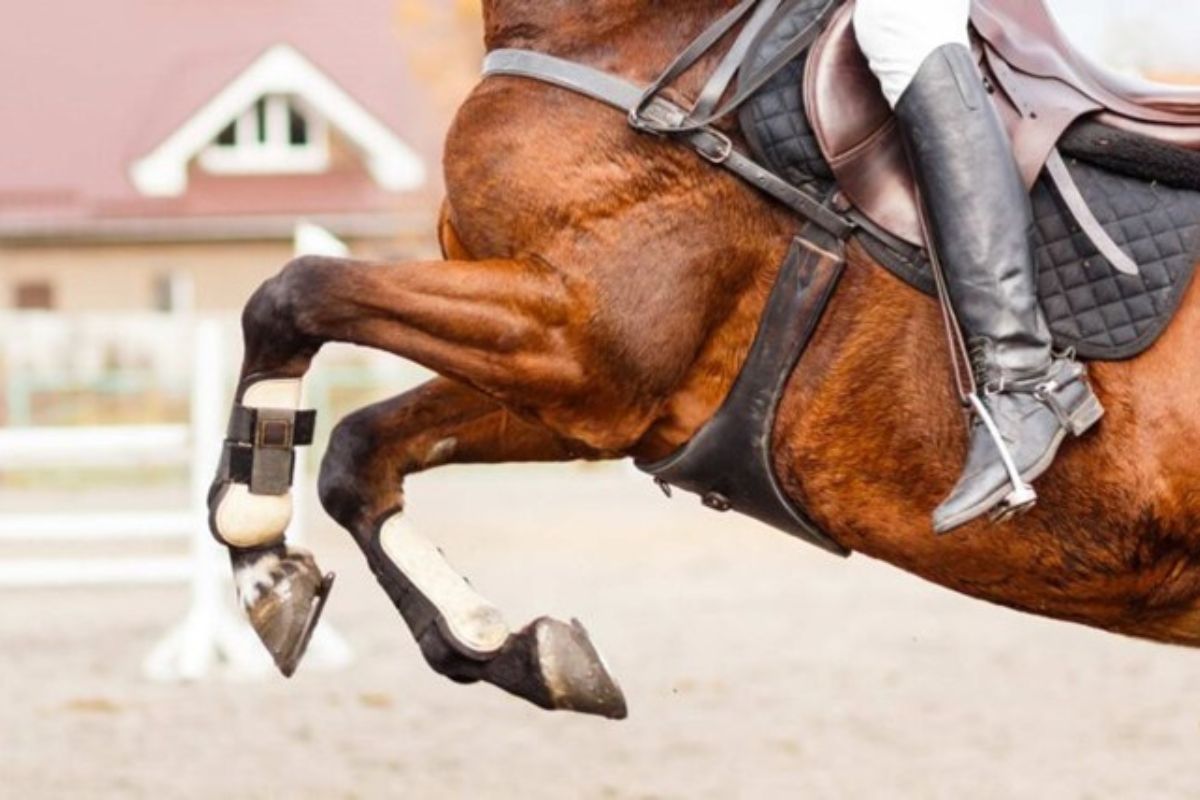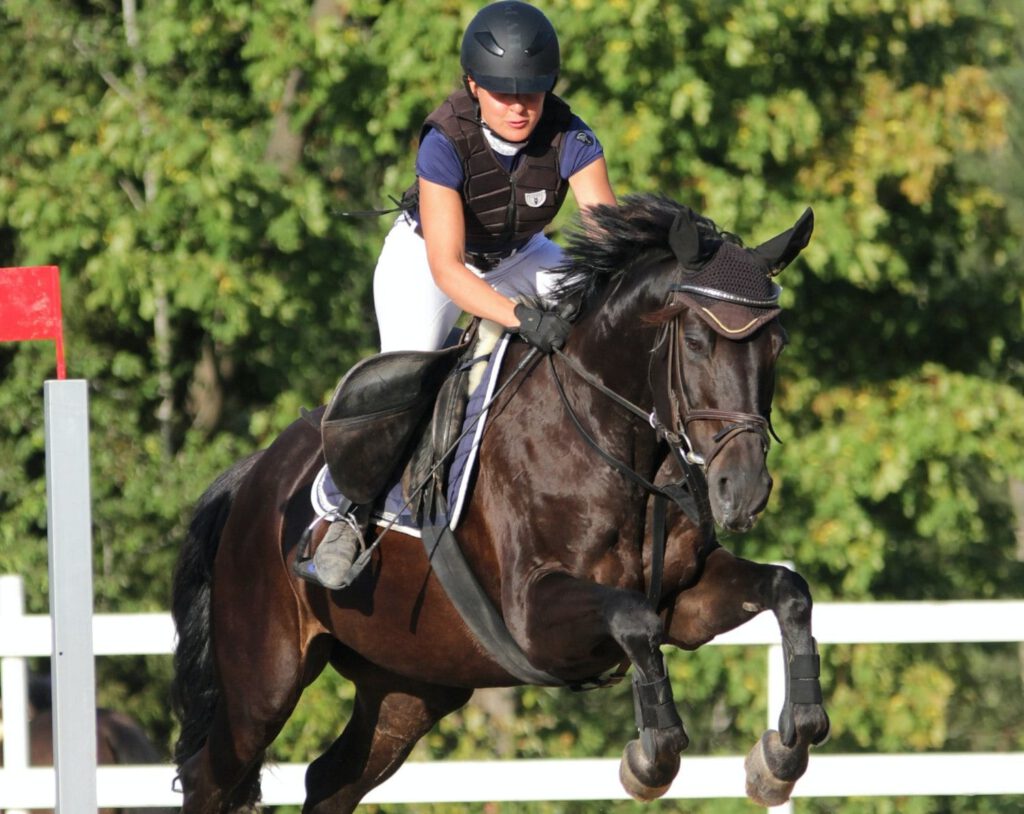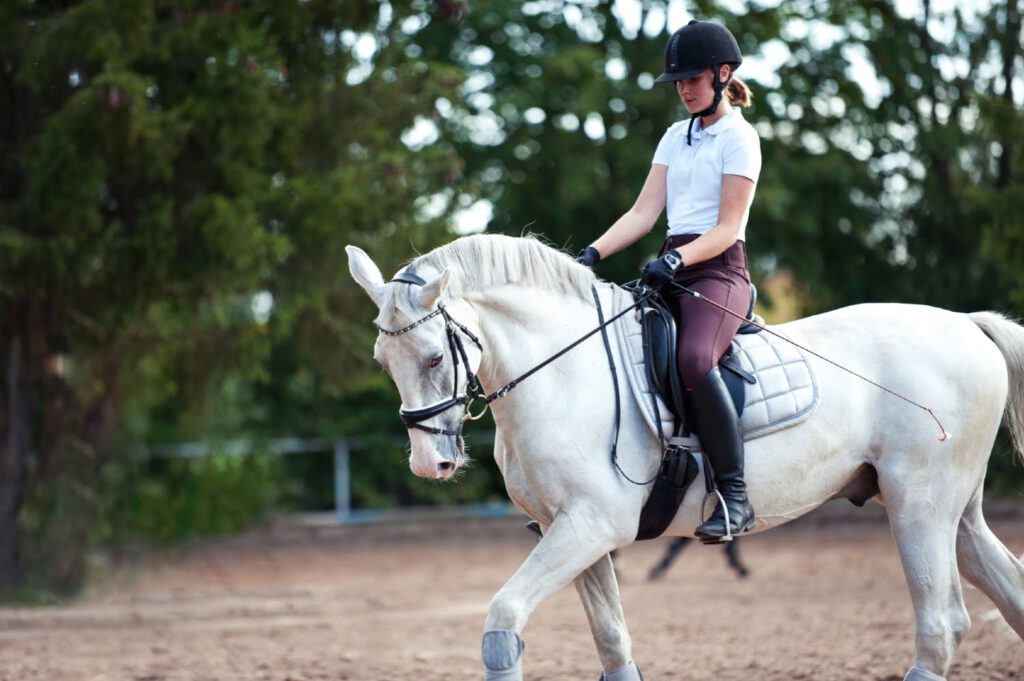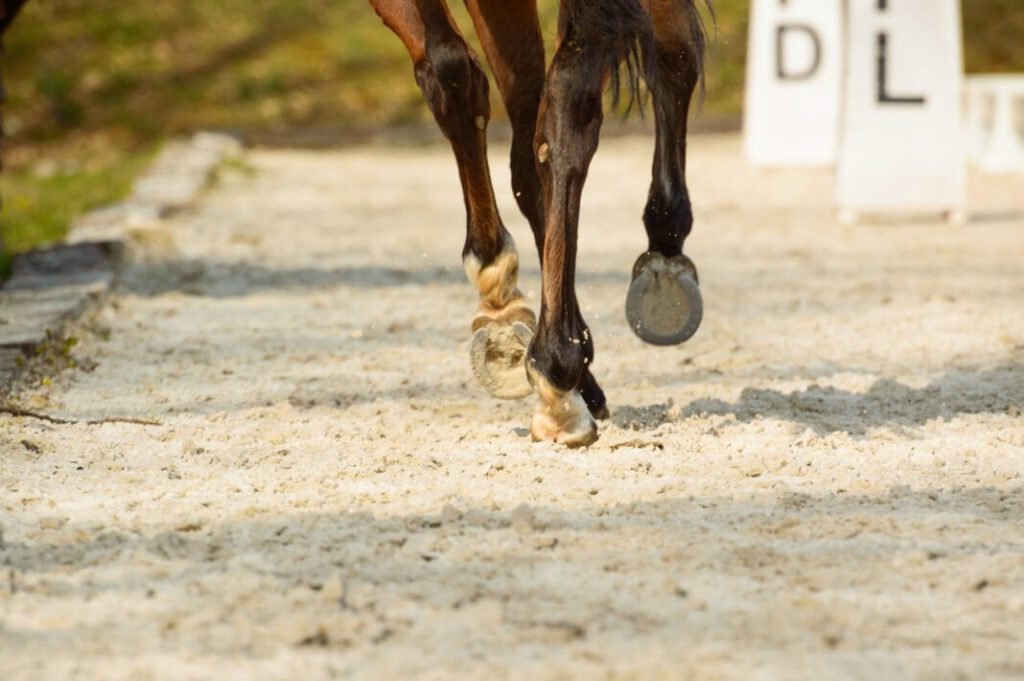Menu

We all want to avoid injuries. The many ways we use the horses challenge their physique. Therefore, the same injuries are often seen within each discipline. Whether it be dressage, show jumping or eventing. But as veterinarian and equine chiropractor Ulla Vestergaard Andersen explains, injuries can generally be avoided. If you remember a number of important things.
You may also like to read: Injuries in the field: How does the mix of mares and geldings play in?
In Ulla Vestergaard Andersen´s treatments, she combines techniques from osteopathy, acupuncture and chiropractic, but will most often - as a starting point - primarily use the functional indirect osteopathic technique in the treatment.
Ulla also uses a lot of Straightness Training in relation to her training of horses. Straightness Training is used by professionals to improve a horse's athletic performance.
Event horses and showjumpers have an increased risk of injury to the flexor tendon in the forelegs. However, research shows that event horses are primarily exposed to wounds and skin abrasions, usually during terrain jumping. At competitions that last several days, kidney failure is unfortunately also common. In addition to the fact that the more serious injuries usually go beyond the flexor tendon, showjumpers and event horses are of course also vulnerable when it comes to injuries to the suspensory ligament. The risk of damage to the deep flexor tendons, the superficial flexor tendons and the suspensory ligament, respectively, is affected by the weight distribution in the leg. Therefore, the work of the farrier is one of the most important things to take seriously.

Both the suspensory ligament and the flexor tendon are hard at work when the fetlock joint needs to be supported as the horse steps all the way through. Therefore, it is important that the weight balance is correct. Otherwise, one part will be overloaded as Ulla Vestergaard Andersen explains.
"A very important focus point for horses' durability is that pruning the hooves focuses on balance in the toe axis - both in relation to the center of rotation of the hoof joint, but also in the outer-inner plane and in the orientation of the hoof bone in relation to the horizontal plane"
- Veterinarian and equine chiropractor Ulla Vestergaard Andersen.
When it has been about eight weeks since a horse last had a farrier, there will be a noticable change in the axis of the toe. This increases the load required for the hoof to roll over the toe. It changes the load ratio between the three tendons around the pastern. And then especially a show jumper is at predominant risk of developing a load injury. Therefore, a hard-working horse must be inspected by a farrier at least every eight weeks.
It should also be added that wedges can help to relieve the deep bending tendons and thus remedy injuries in some horses. However, you must also be careful with the wedges, because the extra load simply will be transferred to the suspensory ligament. Which is then at increased risk of being overloaded.
When it comes to dressage horses, the study that examines the most frequent injuries shows that they most often get damage to the suspensory ligament in the hind legs. Another research has shown which factors provoke lameness in dressage horses in general. Here it is seen that virtually all dressage horses have tried to be lame. And that about a quarter are affected by lameness every two years.
It is both, the age of the horse, the height of the horse, the horse's possible back problems, that plays a part. Plus, the amount of lunging and the use of a horse walker (round treadmill). Plus especially the use of a riding arena its condition, which is associated with injuries that create lameness. In addition to the fact that dressage horses more often than showjumpers get injuries on the suspensory ligament, especially on the hind legs, back problems are also a widespread problem.

Ulla also explains that performing dynamic activation exercises (to some known as carrot exercises) increases the cross-sectional area of the muscles that support the vertebrae. Studies show that the exercises must be performed through five repetitions five days a week for 12 weeks to have an effect. Many dressage horses with back problems could benefit from this.
Surprisingly, lunging has shown to be protect against the development of lameness. However, neither Malgré Tout Media nor Ulla would recommend taking this at face value. There can be a big difference in whether, for example, lunging strengthens the individual horse. Especially because riding arena conditions and the amount of varied training also come into play. Daily lunging in a heavy arena footing, for example, is not recommended. While lunging once or twice a week on a lighter footing may be beneficial for some horses. In addition, Ulla emphasizes that the most important thing is to keep an eye on your own horse's movement pattern.
"Although the above factors have shown to increase or decrease the risk of lameness, this does not have to apply to your horse. The most important thing is that you are aware of changes in your horse's way of moving"
- Veterinarian and equine chiropractor Ulla Vestergaard Andersen.
So, the conclusion would be that, for example, lunging is only healthy for the horse if done in moderation. In general, there is very little exercise that is healthy for a horse's body if repeated day after day.
Another study has tried to determine whether a horse walker can help increase the risk of lameness. Here it turns out that the incidence of lame horses is high. However, it has not been proven exactly what is the cause of the lameness when using a horse walker.
Regardless of whether you have one or the other type of horse, the warm-up is one of the most important things to spend time on to avoid injuries. Because when the horse walks, blood flows out to the muscles. It warms them up, makes them elastic and thus makes them ready to work. If you have a large horse, you should spend more time warming up than if you have a smaller horse. Because it has a larger muscle group, which takes longer to warm up.
In addition, the heating activates the shock-absorbing synovial fluid. When the horse moves in the croup, synovial fluid is pushed out of the joints, a bit like when you twist a sponge, Ulla explains. This fluid helps to protect the joints during exercise. So, it is an important factor in order to prevent joint injuries and to 'lubricate' any sore joints.
Just as important as the warm-up is the cool-down after training. When the horse works hard, it breathes. It does so because the muscles do not have the oxygen available that they need. So lactic acid will gradually accumulate in the muscles. This is perfectly normal. In order to get rid of this lactic acid again, the horse must do a good walk to finish. Because when the muscles get enough oxygen again during the ‘cooling down’, the lactic acid will seep out of the muscles. Thereby the risk of injuries will be reduced, just as the horse becomes less sore in the muscles afterwards.

Unfortunately, many riders have a tendency to train their horses too evenly, and then comes the injuries. Ulla emphasizes that in addition to making sure that the horse is ready for the load, you must remember the varied training. It should not be the same areas of the body that work hard every day. So don´t be afraid to go hacking with a stable buddy. Or put a few trotting poles out in the arena or maybe just walk around for a quarter of an hour. Whether you define yourself as a show jumper, dressage rider or something completely different, varied training is important training.
Identification of risk factors for lameness in dressage horses. Murray, Walters, Snart, Dyson and Parkin, The Veterinary Journal, 2010. / Horsewalker use in dressage horses. T.J. Walker, S.N. Collins, R.C. Murray. Comparative Exercise Physiology, 2012.